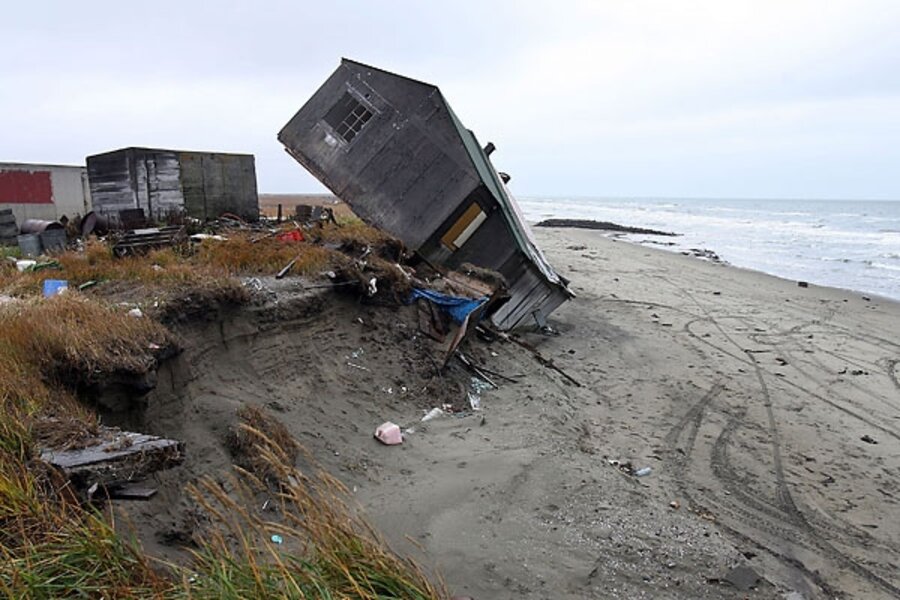Global warming affecting every corner of the US, report says
Loading...
In Alaska, the permafrost is thawing. In the Southwest, the annual rainfall has been decreasing. And seasonal ice cover on the Great Lakes has been declining on average.
No corner of the US has been untouched by global warming. And the effects are expected to tighten their grip over the course of this century, according to a new report from the federal Global Change Research Program released Tuesday.
How tight that grip gets depends on trends in greenhouse-gas emissions from human activities – ranging from burning fossil fuels to deforestation. Unlike previous US assessments, this one includes projections based on a high emission scenario and a low emission scenario. These comparisons underscore how the pace of climate change slows and the overall effects weaken if countries can apply the brakes to greenhouse-gas emissions, largely carbon dioxide. And its regional projections come with a somewhat higher confidence levels than did those in past reports.
While the congressionally-mandated report contains no new research results, specialists say, it is built on research that has been vetted over a decade by the broader community of scientists working in the relevant fields.
The report comes as legislation aimed at reducing US greenhouse-gas emissions is moving through Congress, notes Peter Frumhoff, director of science and policy at the Union of Concerned Scientists, a group based in Cambridge, Mass., that actively pushes for greenhouse-gas reductions.
Most science reports deal with global-scale changes, he says. That tends to keep the issue remote from any one individual's experience, especially when millions of Americans already are coping with the current, deep recession.
The focus on regions within the US, to the extent the state of climate science allows it, "and most importantly having it messaged by the federal government have the potential to build a national conversation about what's at stake," Dr. Frumhoff says.
The report, updating a similar volume that federal agencies produced in 2000, was written by 28 scientists, 16 from US government labs and the rest from leading US universities.
Warming during the 21st century is expected to rise by 2 to 10 degrees Fahrenheit in much of the country, compared with a 1.5 degree increase during the 20th century. The range reflects uncertainties about the path emissions will take and how sensitive the climate system is to changes in greenhouse-gas levels.
The report notes several shifts in natural systems that have already taken place. Water and air temperatures have increased on average, with the some of the largest temperature increases coming during winters in the Midwest and northern Plains states. In those places, average winter air temperatures have risen by more than 7 degrees F. over the past 30 years.
Heavy downpours have become more frequent and more intense across most of the country. Winter snow pack, Arctic sea ice, and river ice are declining. Meanwhile, in many areas the growing season is getting longer.
Looking at economic sectors, the report notes that some electric utilities that rely on nuclear energy or coal have occasionally imposed cuts in power generation over the past several years because rivers that supply cooling water are too warm. The water can't cool the plants and still meet environmental regulations for the temperature of cooling water being returned to the rivers.
Looking ahead, the report describes a future in which the intensity of hurricanes is likely to increase (though not necessarily the number or the number striking land). Sea level continues to rise – with levels at any one spot affected by both local conditions and by a general increase from melting glaciers and ice atop Greenland and Antarctica. And droughts intensify in the US Southwest and Southeast.
These effects can be blunted, the report notes, by combining emissions reductions with adaptation measures – ranging from Boston's Deer Island Sewage Treatment plant to planning new roads in Micronesia in anticipation of sea level rise and increased rainfall.





